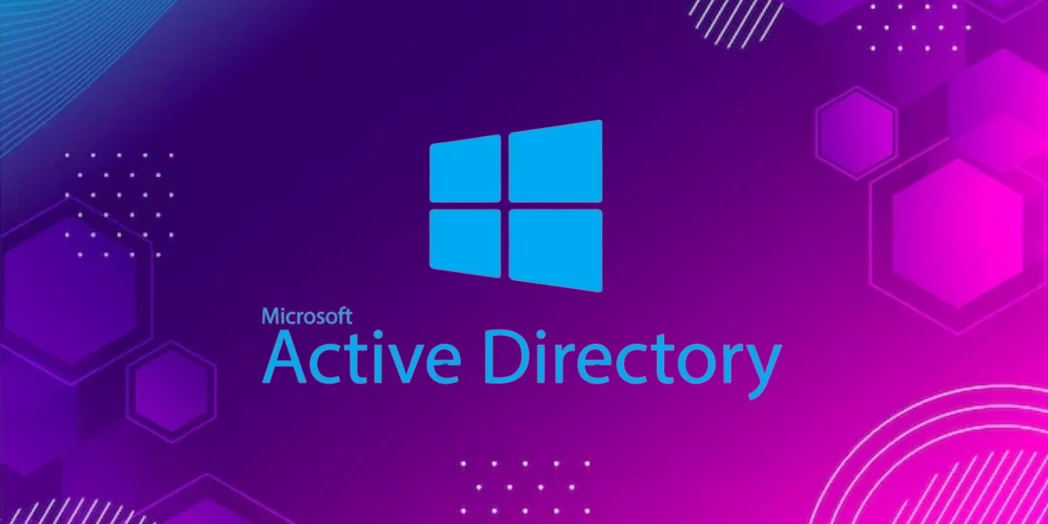
Active Directory authentication is a system that helps authenticate Active Directory users, computers, and services.
This process includes several key components and protocols to ensure secure and efficient access management.
This system protects against unauthorized access to AD and helps in effective role-based access control (RBAC).
Table of Contents
Active Directory Authorization Relies on Following Protocols
Kerberos
Kerberos is an authentication protocol for networks! It is engineered to deliver robust authentication for client-server applications through secret-key cryptography. It is the default authentication method in AD environments due to its efficiency and security.
Active Directory’s reliance on the Kerberos protocol for authorization provides a robust, secure, and efficient method for managing user authentication and access to network resources.
Kerberos’s use of encrypted tickets, mutual authentication, and support for Single Sign-On. This makes it an ideal choice for enterprise environments, ensuring both security and usability.
LDAP
Active Directory (AD) uses the Lightweight Directory Access Protocol (LDAP) to facilitate both authentication and authorization processes.
LDAP is a protocol used to access and manage directory information services over an IP network. In the context of Active Directory, LDAP is used to query and update the directory service.
- Basic authentication involves using login credentials to initiate a request to the server.
- The Simple Authentication and Security Layer (SASL) employs supplementary protocols like Kerberos to establish a connection with the LDAP server.
Kerberos and LDAP authentication protocols collaborate across various client platforms, including Windows, Linux, UNIX, and Apple Mac, within a unified Active Directory network.
Introduction of Active Directory?
A directory is a cataloging structure that contains data about a particular object on the web. The easiest way a Directory means an exhaustive listing of objects.

For example, a phone book is a type of directory that stores information about the contact details of people, businesses & government organizations.
Normal phonebook store details of names, address’s & phone numbers. Active Directory is a part of Microsoft technology that helps to manage computers and other devices on a network.
It is a core element within Windows Server, an operating system designed to power local and Internet-based servers.
Benefits of Active Directory (AD)
- Manage from any computer on the network.
- It organizes data in a Hierarchical Structure.
- Easily access and modify Active Directory from multiple administrative points.
- Active Directory is a centralized gateway for accessing network resources.
- Establish trust with external networks, including older versions of Active Directory and Unix systems.
- Centralized management of user and computer accounts streamlines administration, enhancing efficiency and facilitating consistent security policy enforcement.
- It offers security measures like password policies, group policies, and access controls to safeguard against unauthorized access and malicious actions on the network.
- Designed for scalability, it supports large networks with numerous users and devices, effortlessly expanding by adding more domain controllers and servers as required.
- Facilitates resource sharing and access management, including files and printers, through permissions and security settings.
- Offers robust auditing and reporting features for tracking network changes and activities, aiding in security issue identification.
Active Directory Domain Services or AD DS Provides the following services
Domain Services
As a hub for centralized data management, it facilitates communication between users and domains. This encompasses tasks such as login authentication and providing search capabilities.
Certificate Services
It handles the generation, management, and distribution of certificates, which employ encryption to facilitate secure internet communication using a public key.
Lightweight Directory Services
LDAP supports enabling cross-platform domain services, including integration with Linux computers within your network.
Directory Federation Services
Facilitates single-sign-on (SSO), streamlining user authentication across multiple applications within a single session, eliminating the need for users to repeatedly provide the same credentials.
Rights Management
It governs information rights and management by encrypting content, such as emails or Word documents, on a server using AD RMS, thereby restricting access.
Some Terms to Know About Active Directory
Schema
Group of Policy is a user-defined rule governing objects and attributes in AD DS.
Global Catalog
The Global Catalog (GC) Stores information about every directory object. If you need to find out the user’s contact details, those are stored in the Global Catalog. It enables users and admins to access directory data across domains.
Query and Index Mechanism
The query and index mechanism enables users to search and locate each other within Active Directory, such as when typing a name in a mail client to view potential matches.
Replication
These functions ensure that every DC on the network has the same global catalog and schema information on its network, which helps to maintain consistency across the directory.
Sites
This functionality of AD DS shows the physical structure of your network. A physical or logical grouping of network objects, such as subnets and domain controllers, used to optimize network traffic and manage replication between domain controllers.
Group Policy
This feature enables administrators to apply specific configurations, security settings, software deployment, and other policies to users and computers in a domain.
Trust Relationship
Defines the level of access that one domain has with another domain in a forest, facilitating resource sharing and authentication across domains.
What is the Role of Domain Controllers with Active Directory Domain Services?
Domain Controllers serve as the backbone of Active Directory Domain Services, providing authentication, authorization, and directory services to network users and devices. Active Directory must have at least one Domain Controller (DC) to function.
Here’s is some component’s role in Active Directory Domain Services
- Kerberos Key Distribution Center (KDC): Responsible for verifying and encrypting Kerberos tickets used by AD DS for authentication purposes.
- NetLogon: Functions as the authentication communication service within the domain, facilitating secure communication between clients and domain controllers during the authentication process.
- Windows Time (W32time): Ensures that the time across all computers within the domain is synchronized, which is essential for Kerberos authentication to work correctly.
- Intersite Messaging (IsmServ): Enables domain controllers located in different sites to communicate with each other for replication and site-routing purposes, ensuring efficient data synchronization and domain operations across geographically distributed locations.
Advantages of Active Directory Domain Services
Centralized Management: Provides a centralized location for managing and organizing network resources, including users, computers, and devices.
Single Sign-On: Enables users to access multiple resources using a single set of credentials, enhancing security and convenience.
Group Policy: Allows administrators to enforce security policies, deploy software, and configure settings across the network from a central location.
Scalability: Scales effectively to accommodate growing network infrastructure and user base, ensuring consistent performance and reliability.
Security: Offers robust security features, including authentication protocols, access controls, encryption, and auditing, to protect sensitive data and resources.
Integration: Seamlessly integrates with other Microsoft services and products, such as Exchange Server, SharePoint, and Office 365, for enhanced collaboration and productivity.
Simplified Resource Access: Facilitates easy access to network resources, such as file shares, printers, and applications, through hierarchical organization and efficient directory lookup mechanisms.
Advantages of Active Directory Domain Services
Complexity: Setting up and managing AD DS can be intricate, demanding proficiency in network administration and directory services.
Cost: Implementing and maintaining AD DS infrastructure may involve significant upfront and ongoing costs, including hardware, software, licensing, and personnel.
Client Access Licensing costs vary based on whether organizations obtain the licenses directly from Microsoft or through a reseller; this is just the primary cost.
For training IT staff or hiring specialized professionals to install, further increasing the overall cost.
Dependency on Microsoft Ecosystem: AD DS is tightly integrated with the Microsoft ecosystem, which may limit interoperability with non-Microsoft technologies and platforms.
Compatibility: Active Directory is made for Windows networks, so it can easily integrate with Windows. AD DS may require additional configuration or third-party tools for non-Windows systems, leading to compatibility issues.
Maintenance: Regular maintenance that includes software updates and security patches is essential for maintaining optimal performance and security in AD DS.
Vulnerability: Sometimes AD needs third-party tools to use the system. This is why AD DS can be vulnerable to internal and external security threats and attacks, which can cause harm to the security system.
Key Note
Understanding Active Directory Domain Services is crucial for efficient network management and security. Whether you’re an IT professional seeking to optimize your organization’s infrastructure or an enthusiast delving into the world of directory services, grasping the fundamentals of AD DS empowers you to navigate complex networks with confidence. Stay tuned for more insights and tips on maximizing the potential of AD DS in your environment.
In this blog, we understand what AD DS is, its benefits, terms, advantages & disadvantages. I hope this helped you understand the concept of Active Directory Domain Services.
For more guidance and assistance, connect with Metizsoft Solutions!
AboutChetan Sheladiya
Related Posts
How Print-On-Demand Fulfillment Impacts Customer Satisfaction?
In online shopping, pleasing customers is daunting and of utmost importance. Happy customers tend to become devoted supporters...
Water Supply – On Demand Water Bottle Delivery Mobile Apps!
Digitize your water bottle delivery business in a smart way with Water Supply Mobile App Get it now on Google Play...

